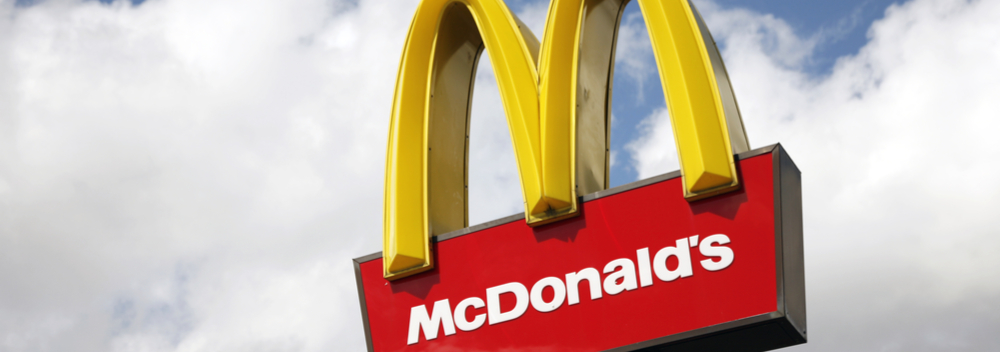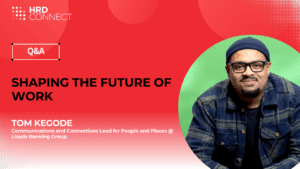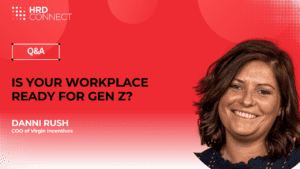Elevating the global digital employee experience at McDonald's
- 5 Min Read
In her presentation at HRD Summit 2018, Paula Coughlan, Chief People Strategy Officer at McDonald’s, shared what it was like creating a digital employee experience throughout the organisation. With the digital generation – Generation Z – now entering the workforce, they are expecting businesses to act and think of different ways when it comes to technology. So the team at McDonald’s has been thinking about how that digital journey starts.
- Author: Rosalind Hill
- Date published: Feb 28, 2018
- Categories

McDonalds’ brand purpose is around creating ‘delicious feel-good moments’ that are easy for everyone to enjoy, in an environment that’s playful and fun. Coughlan explained that these feel-good moments are small moments of connection created between their people and customers; something that cannot be scripted or part of the process, but needs to be authentic and spontaneous. Through McDonalds’ digital for people, they aim to empower their employees to create these small moments of connection for customers. The digital strategy must be anchored in the strategy of the business and aligned with the needs and wants of customers and of the people.

In 2017, McDonald’s undertook a huge amount of customer research and found that in a normal McDonalds dining situation there are around 14 touch points – a human connection every couple of minutes. The quality of those interactions and how customers feel drive whether they will return. Front-of-house hospitality is more important than ever before and a fundamental part of the business strategy.
It takes many people to create those feel-good moments, so this creates challenges for the business. Not least that the business needs 20 million applicants every year globally to fuel the business; different types of roles and people to deal with customers, make decisions, and solve issues for the customer. Attracting the right talent is therefore a priority, as well as creating a fabulous experience so that people want to stay.
This reflects a significant cultural shift that the HR team at McDonald’s has been making in recent years, and is a primary driver of its success.
Community-driven
Ninety-two percent of McDonald’s restaurants are owned and run by franchisees; local people running restaurants in their own communities. This creates a dynamic of a multinational business and collection of small- to medium-sized businesses. As a result, people strategies need to be executed across those businesses and drawn from insights from customers and people. They need to:
- Know they’re working with colleagues who care about customers.
- Have the freedom to work around their lives.
- Be equipped and skilled to have the confidence to go in front of a customer.
- Be placed and positioned to shine and make the best use of their talents.
- Be recognised and appreciated for creating those feel-good moments.
- Be trusted to do the right thing for the customer at that moment.
With everything going back to the customer, the HR team at McDonald’s has been able to set out a clear vision for digital linked to the business strategy, and to help people create feel-good moments for every customer amplified by digital interactions across social media, the app and through video content.
When the team assessed the digital platforms at the beginning of its journey, they found they were asking leaders to access hundreds of websites. Rather than create something new, however, they found something that already worked and built out from it. The Intranet was being used in nearly every restaurant in the franchise model, but was becoming outpaced, and it was difficult to keep pace with external changes. However, it was a much-loved brand so they repurposed it as a portal for their digital tools and for people to access the tools they needed.
Understanding what the people wanted and needed from the digital experience has been critical at McDonald’s. They wanted familiarity, convenience, a two-way dialogue, and something that was engaging and empowering.
As the world’s biggest employer of young people, McDonald’s used gamification and virtual reality to train people – enabling and equipping them to have confidence in front of customers.
Flexibility was also important as people want the freedom to manage their work and private lives. Technology is giving people the opportunity to take control of their schedules – request holidays and swap shifts, for example.
There have also been a number of local innovations. In France chatbots have been used to select people with the hospitality gene; using Snapchat so that candidates can record a video of themselves as part of the recruitment process. In the UK customer feedback is shared with people via named notifications, providing immediate positive reinforcement in the restaurant. This can be further complemented with external social interactions; in Australia, Instagram is used with #HostBoast to add an extra dimension to positive feedback.
All of this must be underpinned by two-way dialogue; using digital to help people understand how we can solve problems for the customer. The team at McDonald’s is creating a tapestry of solutions designed around feelings and needs of the people.
Key lessons:
- Start with the customers – make sure it’s anchored in strategy of the business.
- Overlay feelings and the needs of people to get to the moments that really matter.
- Build on bright spots – find something that works and build on it.
- Embrace the culture – legacy of entrepreneurial spirit at McDonald’s.










